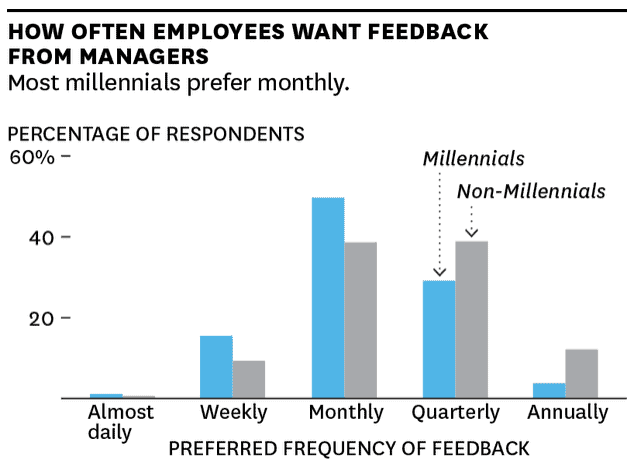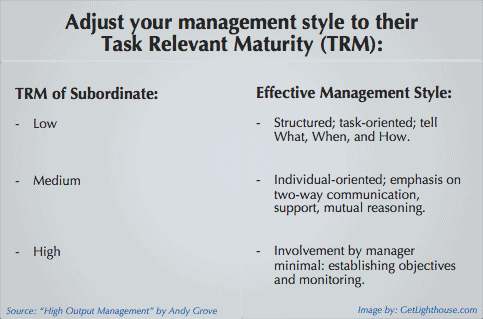"Motivation is the art of getting people to do what you want them to do because they want to do it."
- Dwight Eisenhower, 5 Star General in the US Army in WWII and 34th US President"The greatest leader is not necessarily the one who does the greatest things. He is the one that gets the people to do the greatest things." - Ronald Reagan, 43rd President of the United States
"Coaches who can outline plays on a black board are a dime a dozen. The ones who win get inside their player and motivate." - Vince Lombardi, 5 Time NFL Champion & Hall of Fame Head Coach of the Green Bay Packers
Whether you have a team of 1 or 1,000, motivating employees is critical to your success. And while we see quotes from great leaders describe the importance of motivating people, they often do little to tell you how to actually do it.
Table of Contents
The Good, the Bad, and the Ugly that Impact Employee Motivation
If you don't understand how to motivate a team, then you should know that this is a complex task, because people's motivation can be influenced by many things. Fortunately, Frederick Herzberg conducted research that helps us understand what can either increase or decrease motivation. It’s more than you might think.
He summarized his findings with this helpful chart:

As you can see above, there’s only a handful of things that can truly motivate your team members, and then a lengthy list of different issues that can de-motivate your team. When leading your team, you need to keep in mind both, especially considering “Supervision” and “Relationship with supervisor” are such big de-motivators (That’s you!).
One important finding is that the environment in which people work can have a big impact on their motivation. Factors like frustrating company policies, poor or uncomfortable working conditions, and unfair compensation can all destroy any motivation your team members have.
On the other hand, perks and other superficial aspects of a company's culture, although they may initially attract employees, don't have a significant long-term impact on motivation and retention. They don’t even make the list above.
Employees have certain basic expectations when it comes to things like salaries, benefits, and their overall work experience. If there are major problems in these areas, it can lead to dissatisfaction, but simply making improvements in these areas alone won't greatly increase motivation.
To truly move the needle, invest in the key motivators
To truly motivate your employees, you must focus on what Herzberg refers to as the motivators. These include achievement, responsibility, growth, advancement, the nature of the work itself, and earned recognition. Herzberg’s research suggests that these 6 motivators account for over 80% of job satisfaction, while their lack contributes to nearly 1/3rd of all dissatisfaction.
Ignore these at your own peril.
Many of these areas take significant time and investment, which is why we have quite a bit of further reading if you need help diving into any of these.
This post focuses on the simplest things you can do *today* to start making a difference in motivating employees.
Further reading:
- Benefits of Promoting from Within
- Employee Development: How to grow your employees when you can't promote them
- The Most Important Aspect of Task Relevant Maturity Many Leaders Forget
Mistakes to Avoid when Motivating Your Employees
Now that we've explored the impact of employee motivation, let's shift our focus to something equally important: avoiding common mistakes when it comes to motivating your managers. After all, even the most well-intentioned efforts can sometimes backfire if we're not mindful of certain pitfalls.
Ignoring Individual Needs
One size does not fit all when it comes to motivation. A common mistake leaders make is assuming that what motivates one employee will automatically work for everyone else. Just like we taught you to use Task Relevant Maturity as a way to determine how to manage someone’s work, you should remember that each team member is unique in their motivations.
Take the time to understand each of your team members’ motivations, interests, and what drives them. Then, use that knowledge day to day in the work you give them, the growth opportunities you present them, and your interactions with them as you get to know them.
Failing to communicate consistently
It's essential to communicate consistently and clearly if you want to motivate your team. They often need to hear similar things multiple times for it to really sink in and be absorbed. That goes for believing your praise, understanding and acting on your feedback, or simply absorbing a key cultural point, which is why repetition is so important for leaders.
The good news is that when you're honest and open with your team, it helps build trust and strengthens your relationships. Doing so consistently and as an ongoing effort on your part then makes everyone more motivated and engaged, because they trust you and have time to digest what you communicate repeatedly to them.
Unfair or Excessive Criticism
Criticizing employees unfairly or excessively can demoralize them and undermine their motivation. Telling someone their work is poor, insulting them, or talking down to them doesn’t help them improve and crushes their motivation.
Now, this doesn’t mean you can’t give feedback to your team. Rather, it means that when you see work that needs to improve, you need to provide constructive feedback and coach them to grow. You’ll see more on the positive side of feedback later in this post, but for now the important lesson is to recognize that dumping on your team, and not showing them a path to improve is the road to a checked out team that doesn’t change. It’s also exactly what Herzberg was warning about with how a “relationship with supervisor” can de-motivate your team members.
3 Tactics for Motivating Employees You Can Do Today
It's easy to read blog posts or books and feel like you're learning. Pick up a tactic here, read an interesting insight there. However, it doesn't mean much if you don't apply them.
The best way to learn is by doing. Seeing how an approach works best for you, or needs to be adapted to your situation is the most important step in learning to lead. That's why each of these approaches are things that with just a little bit of thought, even just 5-10 minutes, you can make a difference for the employee you apply it to.
1) Give specific praise on something great they did
Mary Kay Ash built a cosmetics empire on the concept of praise. She built it into the culture of her company, even going so far as to reward her best sales leaders with special pink Cadillacs like the one pictured above. It has since become a cultural icon for the company and a method for teaching key values that have outlived their bold founder.
However, you don't need budget for a car lease to benefit from the power of praise with your team. Even a well timed, and thoughtful email or chat message can go a long way. Research by Gallup found that regular praise had a dramatic impact:
"[Those answering "strongly agree to] "In the last seven days, I have received recognition or praise for doing good work" is responsible for a 10% to 20% difference in revenue and productivity.
Employees who report that they're not adequately recognized at work are three times more likely to say they'll quit in the next year."
Whether you're looking for new gains or to reduce costly turnover, praise is one of the simplest tools at your disposal. It's why Hall of Fame football coach, Bill Walsh said, "Few things offer greater return on less investment than praise.”
Now that we understand its importance, let's get specific, so you can start praising today.
- Frequent: As we learned with Gallup's research above, the key is to recognize each employee weekly. Even your best people benefit from knowing you appreciate their consistently solid work.
- Specific: The best praise lets your employee know exactly what you appreciate and want to see more of. Think about how you feel when you're given a patronizing, rushed, "Good job" versus a thoughtful, specific, "Your visuals for that project were great. It's clear you put extra effort into them."
- Strategic: If specific praise helps your team know what you notice and want to see more of, then the best thing to do is be strategic in what praise you give. That can mean any of the following: recognizing an unsung hero on a tough project, praising someone showing signs of improving a weakness, or reinforcing great work you want someone to continue.
What to do today: Write down the names of everyone on your team. Now take 5 minutes and think about one thing each of them has done well in the last week you'd like to recognize. Send them a quick email, chat, or walk by their desk and give them that specific praise. Don't be surprised if you see it lift their spirits and motivates them.
2) Give feedback on their work
Giving feedback is a critical part of developing people and getting the most out of them. As management expert Ken Blanchard writes:
"The "gift” of objective, honest feedback is among the most valuable things that you can provide one. Effective feedback can do many things:
- Honor competence and reinforce behaviors you are looking for
- Help align expectations and priorities
- Fill gaps in knowledge
- Let people know where to take corrective action
- Alleviate fear of the unknown"
Feedback is also something your employees crave. Recent research shows that especially Millennials want significantly more feedback than they're receiving:
There's a strong chance you're not giving enough feedback, as the study from SuccessFactors showed:
"Millennials want feedback 50% more often than other employees. They also told us that their number one source of development is their manager, but only 46% agreed that their managers delivered on their expectations for feedback."
So if your people need more feedback from you than you've been providing, what do you do? Start with Task Relevant Maturity.
The power of Task Relevant Maturity:
This classic management concept takes a simple approach to managing your employees. It bases the degree to which you are hands-on (or off) on your employee's experience with the given task at hand.
The mistake most managers make is looking at the person's overall performance and not adjusting based on their specific experience in a task or new role. Here's a simple way to think about how to motivate employees, through applying feedback and frequency of involvement with your team member's work:
- When their TRM is low, you'll want to be very hands on and look at specific aspects of their work to ensure they're on the right track. Feedback may focus on the approaches they're using to fix problems and complete their work. Here, you're teaching them how to fish from scratch.
- When their TRM is medium, you can start to step back and focus more on their decision making processes they use, and ensure they're managing your expectations. Feedback may focus on how and when they update you, and coaching them when they make mistakes.
- When their TRM is high, you can trust that they can handle the work responsibilities they're given. Feedback now can focus on how well they did in delivering on desired outcomes, and the tiny details that separate good and great work.
No matter someone's experience level, feedback can help them improve and motivate them. Focusing on the areas where it can have the highest impact, and is appropriate for their Task Relevant Maturity, can help you make the most of the time you invest in creating good feedback.
What to do Today: Take a look at your calendar. Who do you have your next few one on ones with? Think about what the biggest tasks are they're focused on and judge their Task Relevant Maturity for them. Based on their TRM, take 5 minutes and find an appropriate piece of feedback to give them in your one on one with them. They'll be glad to hear you're thinking about their work and taking the time to help them improve.
3) Remind them of their impact & purpose
Whether you're working at a rapidly growing startup or a small part of a big company, it's easy to forget the impact you're having. As roles change and projects evolve, seeing why your work really matters can get lost in the shuffle. This is very unfortunate, as it's a big part of motivating employees.
In the video embedded above, Dan Pink discusses a simple framework for motivating employees: Autonomy, Mastery, and Purpose. As he describes them:
"Autonomy: the urge to direct our own lives.
Mastery: the desire to get better and better at something that matters.
Purpose: the yearning to do what we do in the service of something larger than ourselves."
It is the purpose that even great companies can forget to instill in their employees, even while doing a great job of training them and giving them the freedom to do their work.
It's also easy to think that some jobs have less purpose than others. It's a huge mistake to overlook tying any role, even the most menial or unsung, to the higher mission and purpose of your company.
Everyone has a purpose:
In a study of workers at a call center:
"[call center employees that] read stories from the beneficiaries of the fundraising organization, who described how the scholarships they obtained from the organization had a positive impact on their lives... earned more than twice the number of weekly pledges (from an average of 9 to an average of 23) and more than twice the amount of weekly donation money (from an average of $1,288 to an average of $3,130).”
As it turns out, the call center employees who were told nothing, or read about the valuable skills they'd learn on the job performed the same. It was only the addition of understanding their purpose that improved performance.
And in the ultimate case of understanding someone's impact and finding purpose in a tough job, a study of hospital janitors found:
"This second, happier group didn't see themselves as custodial workers at all.
One described forming such a bond with patients that she continued to write letters to some of them after they were discharged. Another paid attention to which patients seemed to have few visitors or none at all, and would make sure to double back to spend some time with them.
Some, when asked what their jobs were, would say "I'm an ambassador for the hospital" or even, in one case, "I'm a healer. I create sterile spaces in the hospital. My role here is to do everything I can to promote the healing of the patients."
No matter the role, there is an impact on the world. Janitors help create sterile environments to help heal patients. Farmers feed the world. Accountants help business owners build stable companies that support their employees. Tech support helps your customers experience the goal of your product. Engineers build products that make the world a better place. The list goes on...
You miss out on a major way to motivate and engage your people if you don't tie even the unsexy tasks in their job to a higher purpose.
What to do Today: Take 5 minutes and reflect on the work of your team. How does it help your company achieve its goals? When those goals are achieved, how does it make the lives of customers better?
Next time you're going over their tasks, remind everyone why their work matters. Share a story or testimonial you've heard from customers or try putting a face and a name to the bug report they're working on. You might be surprised how much hearing that resonates with them and boosts morale.
Bonus: Go for the Trifecta.
If you're feeling comfortable with each of these ways to motivate employees, then the pro move is to pull off all three at once. You can give praise and feedback together in one session that ties to a greater purpose in the company. Do this and you'll see your team member beaming from ear to ear.
Here's an example:
In a past job, as a member of the product team, I sometimes was looped into customer support conversations when bugs or feature requests were involved.
In this situation, the support request included a known bug that would take some time to fix. The customer was also clearly frustrated with us.
Our support person gave a calm, friendly answer that not only helped them with a workaround to address their biggest problem, but it showed a great deal of empathy. It diffused the situation and turned the customer's attitude completely around.
Seeing this, I took the time to write an email to the support person:
- Praising them for their friendly attitude and empathy they showed despite regularly getting angry emails.
- Gave helpful feedback on escalating the bug to me, and how they could improve on the workaround they suggested.
- Thanked them for their help in saving the customer, and mentioned how I knew they were an unsung hero in helping our customers succeed.
For the next week, this support person was noticeably happier, and going forward, our working relationship also improved. Even today, I have to make a conscious effort to remember to do these things. Every time I see a positive result, it helps me get better at this important habit.
With just a bit of your time and some thoughtful effort, you can make great progress in motivating employees on your team.
Conclusion
Motivating your team is not just a goal; it's an ongoing commitment. Throughout this article, we've explored the signs of demotivation, learned how to motivate a team, and common mistakes to avoid.
Remember, motivation is the fuel that drives exceptional performance and fosters a positive work environment. By understanding the signs of demotivation and taking proactive steps to address them, you can reignite your team's passion and productivity.
Further reading:
- How To Praise Your Team Members: The Best Ways To Motivate Through Praise
- 6 Awesome Ways To Give Feedback To Your Team
- How To Use A Positive Outlook To Make Yourself A Better Leader
- The Ultimate Workplace Praise Guide


External vs Internal motivation: which is better?
When it comes to motivation, both external and internal factors play important roles. However, the key is to strike a balance between the two.
External motivation, such as rewards, recognition, or praise, can provide an initial boost and incentivize desired behaviors in your employees. On the other hand, internal motivation, driven by personal values, passion, and a sense of purpose, fuels long-term commitment and satisfaction. For these, you need to get to know your team more and provide thoughtful opportunities for them.
Ultimately, you should use a healthy combination of both, because it leverages external motivators while nurturing intrinsic motivation, creating a more sustainable and fulfilling drive for success.
What happens when employees lack motivation?
When employees lack motivation, it can have several negative impacts on both individuals and your overall organization. Here are some common consequences of employee demotivation you need to avoid:
- Decreased Productivity: Employees may become disengaged, resulting in missed deadlines, lower quality work, decreased output, and a lack of participation in meetings.
- Poor Morale: Demotivated employees can create a negative atmosphere on your team, bringing toxic moods to meetings, being difficult to work with, and other problems.
- Increased Turnover: Lack of motivation can contribute to higher employee turnover rates both for the affected employees and their colleagues that won’t like working with them anymore.
- Decreased Customer Satisfaction: Demotivated employees provide poor customer service, leading to dissatisfied customers, negative reviews, and loss of revenue.
It is crucial for leaders and managers to identify signs of demotivation and take proactive steps to address and reignite employee motivation.







